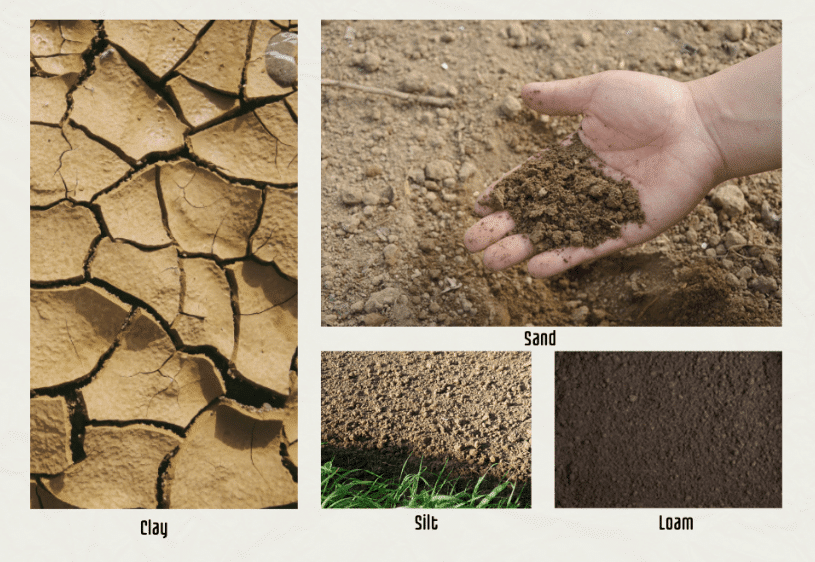
Learning to garden well is a tall task and often takes years or decades to master. Knowing technique, what plants to grow, when to plant, and how to structure a garden is a skill learned in time.
One of the biggest components of becoming a master gardener is learning to work with the soil. Every garden is different because soil can change dramatically depending on location, previous farming practices, etc.
We will explore the four primary types of soil that can be found in gardens around the world, but especially in the United States. This article will also go over the strategy for each type of soil, so you can grow the largest and best plants possible.
Core building blocks of soil
Most soil is comprised of five key ingredients: minerals, organic matter, water, air, and microorganisms.
- Minerals – These take up the majority of the soil “recipe”. Sand, silt, and clay are the three mineral particles found in soil.
- Organic matter – Decomposed plants and animals make up the organic matter in soil. Organic matter makes up to 5% of the soil, according to some estimates.
- Water – Many do not think about this aspect, but water is a large building block of soil and contributes to the texture.
- Air – Nitrogen, oxygen, and carbon dioxide can all be present in varying amounts in soil. The amount of air in the soil is directly related to the amount of water in the soil and overall density – but is usually between 30-60% according to the publication Science Direct.
- Microorganisms – Bacteria, actinomycetes, algae, fungi, and protozoa can all be found in soil. These living organisms help improve fertility and even transport food and nutrients for plants.
How plants respond to different types of soil
Plants react in different ways depending on the makeup of the soil. Water drainage rate, density, and nutrient capacity all have dramatic effects on how different varieties react.
Plants grown in soils with slow water drainage are often deprived of oxygen because the root area is saturated with liquid. This challenge is usually combated with a variety of techniques, including artificial drainage of soils using a type of installed subsurface drainage or leveling fields. Soil structures can also be improved by using additives like gypsum or additional organic matter.
Soil type has a huge effect on the overall nutrient capacity of a plant. If an area of soil is high in clay and organic matter content, the more catonic (or positively charged) nutrients the soil will retain. Plants can withdraw nutrients from “pools” located in these soils.
Soil density (or “compaction”) happens when soil is pushed together. This reduces the amount of air in the soil mix, and thus, creates higher-density conditions for a plant. Soils with extremely high density have trouble absorbing water, meaning root systems cannot access the resources they need to grow strong plants. However, the subject of plant health and soil compaction is a bit more complex than at first glance. Overall crop yield in a high soil compaction can depend on whether the soil is experiencing a wet season or a dry season.
The University of Minnesota describes this in a publication about soil compaction, and we have recreated an illustration below.
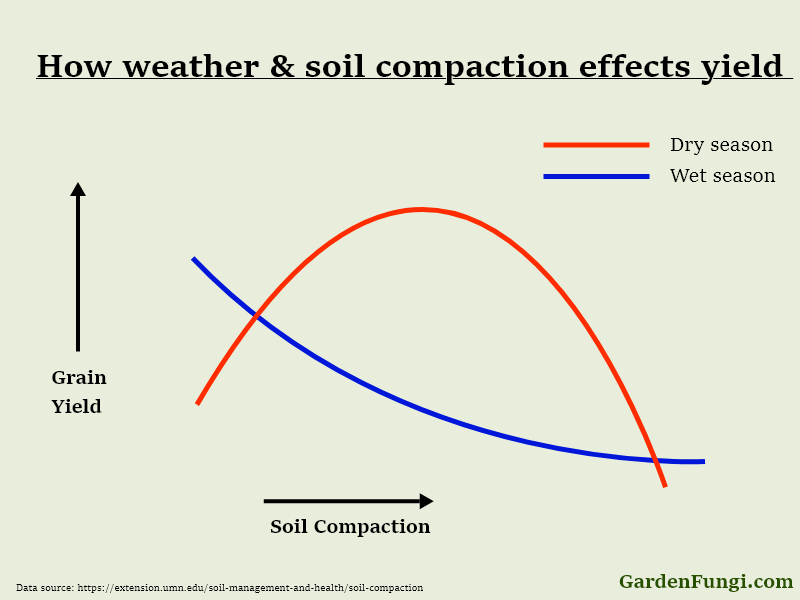
Garden strategy with the primary soil types
There are four primary types of soil in the United States. These soils vary on the contents found within, but are largely distinctive based on the size of particulates. Sandy soils are the largest, with clay having the smallest.
Sandy Soil
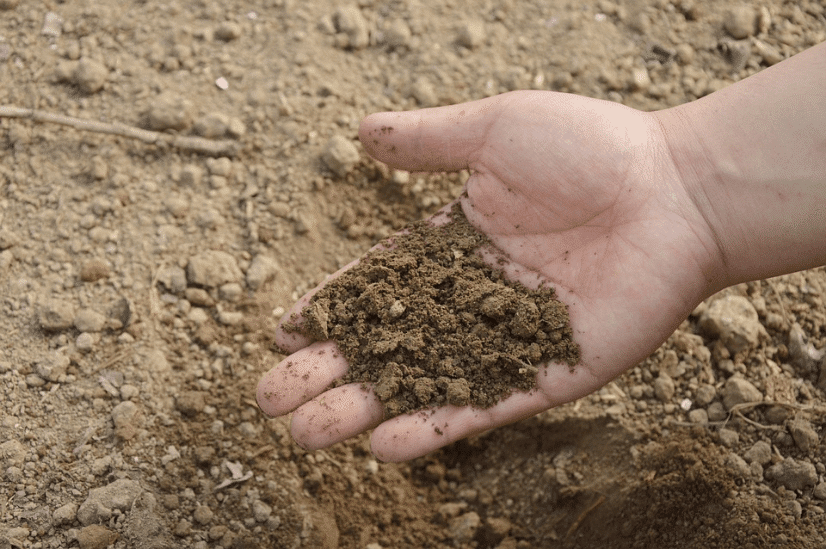
Sandy soil is made up of the largest particles relative to other soil types. Sandy soil will feel “grittier” to the touch than other soils. This type of soil will often look visibly dry and may have larger rock components present in the local area. Sandy soils
Sandy soils are found in the southeastern part of the United States, especially near the coastline. States like Florida, Georgia, Alabama, South Carolina, North Carolina and coastal Virginia can all have the highest compositions of sandy soil. There are other sandy pockets in the U.S. including parts of Nebraska (known as the “Nebraska Sand Hills”), Texas, Michigan and Oregon.
Growth strategies in sandy soil include plants that can work with high draining capacity. Root vegetables like potatoes and carrots often do well in these soils.
Silty Soil
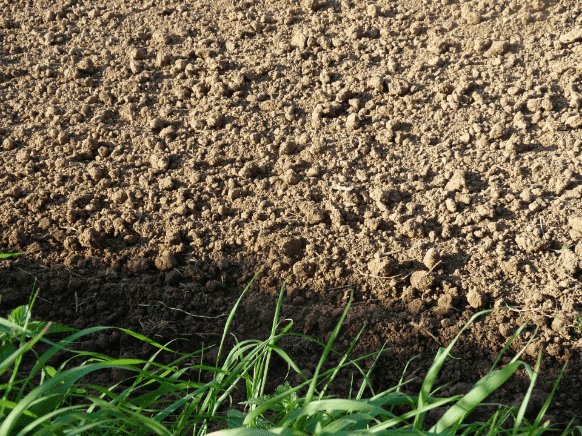
Silty (silts) soil is a blend of sandy and clay soils. It has a much more smooth consistency compared to sandy soils. Because this is a blend, the overall material will be much smaller and will have slower water drainage than sandy soil.
The highest composition of these soils is found in the Midwest. States like Iowa, Kansas, Missouri, Ohio, Indiana, and Kentucky have high levels of silt. There is a line of silt soil that parallels the Mississippi River all the way to Louisiana where it empties into the Gulf of Mexico.
Silty soils hold water for longer periods of time, and as a result, have a harder time warming up for spring planting. Many plants can do well in this soil type, but it’s helpful to have some form of drainage during high water periods.
Clay Soil
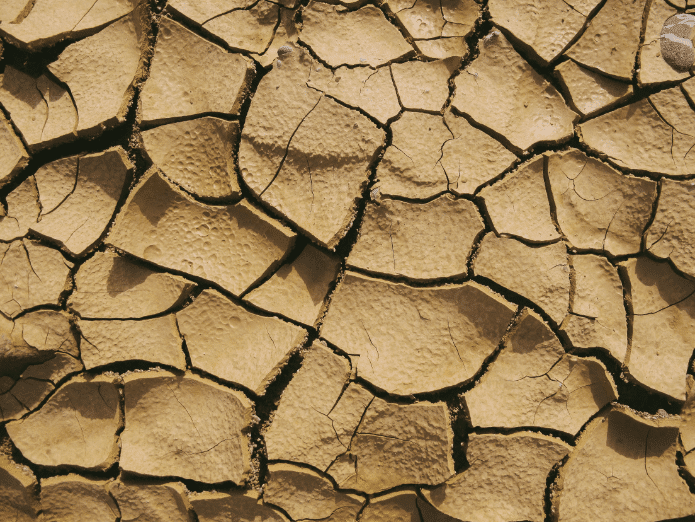
Clay is the smallest type of soil and the materials are packed extremely tight. It has a hard-packed texture when dry and a sticky, muddy texture when wet. If you’ve ever stepped in wet clay, it will clump in large chunks on the bottom of your shoes. Nutrients tend to stay in the soil longer due to the lack of drainage, thus resulting in a highly nutrient-rich environment for plants.
Clay can be found in light concentrations all over the United States. The highest concentrations of clay are located in the upper Midwest (the Red River Valley of North Dakota and Minnesota), in Texas, Oklahoma and parts of California.
When drained and aerated correctly, clay can be an excellent growing environment for a plant. Grasses and flowering plants like Big Bluestem, Black-Eyed Susan and Canadian Wild Rye grow well in clay. Vegetables like kale, broccoli, squash, cabbage and pumpkins can all thrive as well.
Loamy Soil
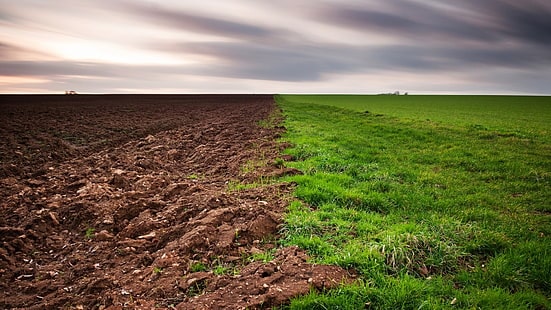
Loamy soil is the best-case scenario for gardeners because it is actually a blend of the other three types. It has a soft, fluffy texture and a dark, earthy color. Since loam is a blend, other soils can technically be added to create the perfect mixture for your gardening strategy. Loam sits at the center of the soil-type triangle.
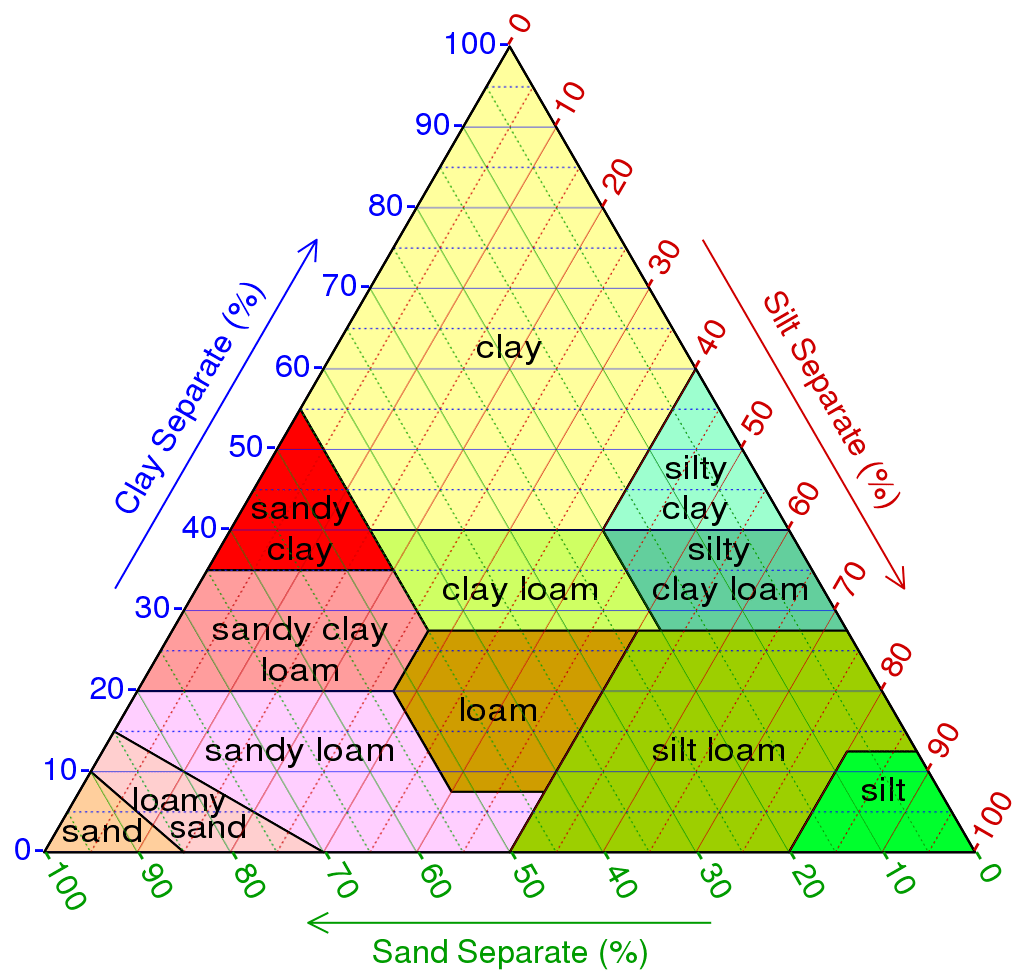
Loamy soil can be naturally found in Minnesota, Michigan, Ohio, Wisconsin, Iowa and other Midwestern states. Most gardeners must create their own loamy blend in their growing areas. Author Glenda Taylor put together a rough recipe for making loamy soil.
This soil type is ideal for growing nearly every type of plant and vegetable.
How do I know what type of soil I have?
As a gardener, it’s extremely important and helpful to know what type of soil you are working with. This can help you select the best plant varieties for your situation. It can also help you think through ways to develop even better soil conditions using soil blends, aeration, drainage techniques, etc.
There are several ways you can manually check your soil to get a close idea of what type of soil you have. You can also send a sample to a professional lab for testing (this is the most accurate method).
At-home methods for checking soil type
Water pouring test
- Find a patch of undisturbed soil in your garden area.
- Pour 6-12oz of water onto the soil.
- Observe what happens: If the water sinks into the soil quickly (within a few seconds), your soil is likely on the sandy end of the spectrum. If it takes more time to sink, it’s on the clay end of the spectrum. The water timing will be in the middle with silts and loams.
Soil rolling test
- Remove a handful of soil from your garden area.
- Attempt to “roll” the soil in a cylindrical shape, much like rolling out pizza dough.
- Observe what happens: if the soil is sandy, it will not want to form a shape and you will be able to feel the sandy texture on your palms. If your soil is clay, it will roll into a cylinder and will want to cling to your palms.
Sedimentation test
- Remove ½ cup of soil from your garden area.
- Add the soil to a mason jar (or similar sealable glass container) along with 2 cups of water.
- Seal the container and shake well.
- Leave the container for 12 hours.
- Observe what happens: if the water in the jar is quite clear and free of particles, the soil is likely sandy. If there is a muddy layer in the water with a line of particles, this is likely clay or silt.
At-home soil testing kit
- Find an at-home soil testing kit. These can be purchased online or in retail gardening stores (like Lowe’s).
- Follow instructions on your purchased kit.
Professional method of testing soil
By using all three of the above manual tests, you should be able to gain enough data to make decisions on how to proceed. But if you want to get very technical, you can have your soil tested by a professional.
The Soil Science Society of America maintains a database of labs that participate in soil testing. You can search by lab name, select from a list of existing labs or find a lab by state or province. Running a search will reveal the name of the lab and contact information.
Conclusion
Soil is arguably the most crucial element of a gardener’s success. It can make or break your methods of planting, watering and caring for your plants. By knowing your soil type, you can create a proper strategy for optimal growth and yield. As each year passes, you can take one step closer to the prestigious title of “professional gardener”.
Happy gardening!
Brady Krchnavy
Brady grew up farming the fields of southeast North Dakota and is the owner of GardenFungi.com. He helps farmers and growers enhance root growth and improve soil health.

